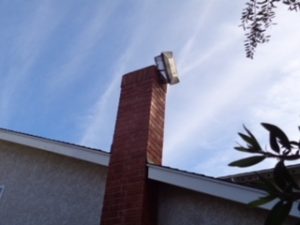 Gas logs are so very convenient–no fuss, no mess; instant on-instant off; clean burning to the environment as well as very little creosote build-up in the chimney.
Gas logs are so very convenient–no fuss, no mess; instant on-instant off; clean burning to the environment as well as very little creosote build-up in the chimney.
Before making that decision, there are several things to take into consideration first. To help you, here are 16 tips you need to know when deciding on artificial gas logs.
1) First things first, analyze the pros and cons of gas logs to make sure that you know all the facts to make an informed decision.
2) If your fireplace isn’t plumbed for gas, consult with a licensed plumber who specializes in gas. Depending on where the gas is located, the cost for routing the gas to the fireplace may be cost-prohibitive which may be a deciding factor in the decision to install gas logs.
3) Choose which type of gas you will be using–Natural Gas or LP (propane).
4) Determine if you want vented or unvented (vent-free) gas logs. Keep in mind that unvented gas logs are illegal in many states, including California.
5) Decide on how you want to start and control your gas log set: Match Light; Manual Safety Pilot or Remote Control.
6) Have the chimney inspected and swept if needed by a CSIA Certified Chimney Sweep. Make any necessary repairs to the system so you can start with a clean slate.
7) Purchasing a gas log set with a lifetime warranty on the logs is a good investment. These better quality logs have the added benefit of looking more realistic.
8) Gas log sets that have white-color logs (such as Birch or Beech woods) will darken up from flame impingement (sooting) and after a while, may not look so nice. A certain amount of flame impingement is natural. Artificial gas logs that are darker in color (such as oak) will still have flame impingement but it won’t be so obvious.
9) Measuring the firebox to determine the proper size of gas logs is absolutely critical. If a gas log set is too large, the log set will sit too far forward and you may have gas spillage into the room. Here is how you can measure your firebox:

A) Measure the front width of the firebox
B) Measure the width of the backwall of the firebox
C) Measure the depth of the firebox from front to back
D) Measure the height of the firebox opening
E-1) Which side is the gas stub location: Left? Right? Rear? Floor?
E-2) How far does the gas stub extend into the firebox:
E-3) What is the distance from the gas stub to the firebox floor:
10) There should be a minimum of 3″ on each side, from the gas logs to each side wall. (For Manual Safety Pilot systems and Remote Control Gas log systems, the clearances are more. See manufacturer’s instructions for sizing.)
11) When installing gas logs, the manufacturer’s instructions will show how the logs are to be positioned on the grate. This is critical. If the logs are not positioned correctly, you can have gas spillage into the room. A professional installer will use a special gas-detecting tool to detect gas spillage. After the installer has tested the placement of the logs, don’t ever move the logs. They are supposed to be positioned in a very specific way. Note: Simply using a “soap bubble test” will not detect gas spillage into the room.
12) Adding small black lava rocks, realistic glowing embers, black glass, pine cones, acorns and wood chunks will enhance the beauty and the realism of the artificial gas logs. Some gas log manufacturers have also created “cracklers,” which are devices that replicate the sound of a wood burning fire.
13) Completely covering the gas burner tray with sand, silica or vermiculite is important. Otherwise, flame impingement (sooting) on the gas logs can occur. Also, sand in the burner pan can prevent overheating.
14) Install a damper clamp to lock the damper in a FULLY OPEN position. A damper that is partially or completely closed will allow for more heat from your fireplace but will also allow gases to enter into the home which is extremely dangerous.
15) Always make sure that your gas logs are not on at the same time as your furnace or central heater. If you do, you can lose the draw from the fireplace so instead of the gases going up the flue, they can enter the room instead. Remember: One on at a time, never on at the same time.
Bonus Tip to Enhance the look of Gas Logs:
16) Before installing artificial gas logs, paint the firebox black, using a high temperature paint. This brings all the focus on the beautiful gas logs instead of the smoke-stained walls from previous wood-burning usage.
Artificial gas logs provide convenience, an attractive and realistic display of a wood fire while clean burning to the environment and to your chimney.




